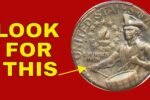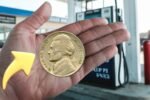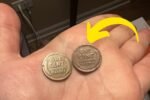Hidden for Decades: In the world of coin collecting, it’s not always ancient or centuries-old coins that turn heads — sometimes, it’s the seemingly ordinary pocket change from the 1970s. One such example is making waves today: a rare 1976 quarter has recently been appraised at over $20,000, and it was hiding in a private collection for decades.
This unexpected treasure has sparked excitement among numismatists and casual collectors alike, proving once again that history — and value — can live in the most unsuspecting places.
A Special Year in U.S. History
The 1976 quarter is part of a special series minted to commemorate the United States Bicentennial, celebrating 200 years of independence. Unlike regular quarters, these Bicentennial coins feature a dual date — 1776–1976 — and a unique reverse design showing a Colonial drummer, created by Jack L. Ahr.
The U.S. Mint produced millions of these coins in both Philadelphia and Denver, and a special set in San Francisco, including 40% silver versions intended for collectors. But among the many made, a tiny number were struck with rare errors or on the wrong planchets — and these are the coins that command big money today.
The $20,000 Find
So what makes this specific 1976 quarter worth more than a luxury car?
This particular coin was struck on a 40% silver planchet intended only for collector sets, yet somehow made its way into regular circulation — a minting error that should never have occurred. Even more rare, the coin shows proof-like qualities, was never cleaned or circulated heavily, and remains in near-perfect condition.
After being tucked away in a coin folder for over 40 years, it was recently authenticated and graded by the Professional Coin Grading Service (PCGS) and confirmed as a rare mint error. The appraised value? Over $20,000.
What Makes These Quarters So Valuable?
While most 1976 quarters are only worth face value, rare variants can skyrocket in price based on several key factors:
-
Struck on silver planchets not intended for general circulation
-
Off-metal errors or struck on foreign coin blanks
-
Proof errors with mirrored fields and frosted details
-
High-grade condition (MS-67 or higher)
-
Low population — very few known examples
Collectors are willing to pay top dollar for these rare combinations, especially when certified by reputable grading companies.
How to Tell If Your 1976 Quarter Is Valuable
Want to check your own Bicentennial quarters? Here’s what to look for:
-
Weight: A standard clad quarter weighs 5.67 grams, while the silver version weighs 5.75 grams. Use a precision scale.
-
Edge: Silver quarters have a clean, solid edge, while clad ones show a copper stripe.
-
Mint mark: Look for an “S” mint mark — it indicates San Francisco and may be silver.
-
Unusual appearance: Strong luster, mirrored finish, or visible errors could mean it’s worth more.
-
Magnet test: Genuine quarters are not magnetic — be cautious of counterfeits.
What to Do If You Find One
If you believe you have a rare 1976 quarter:
-
Handle it carefully — use gloves or hold by the edges.
-
Do not clean the coin — this can reduce its value.
-
Weigh it and inspect it under good lighting.
-
Get it graded by a professional service like PCGS or NGC.
A Hidden Gem No More
This newly discovered 1976 quarter, once buried in a collection and nearly forgotten, is now a highligh
t in the numismatic world. Its story is a reminder that extraordinary value can lie hidden in plain sight — and that the coins jingling in your change jar may be more than just pocket money.
So the next time you receive a quarter, take a closer look. You might just be holding history — and possibly a small fortune — in your hand.
FAQs for “The 1976 Quarter That’s Now Worth Over $20,000″:
FAQ 1: Why is the 1976 quarter worth over $20,000?
A rare version of the 1976 quarter was mistakenly struck on a 40% silver planchet meant only for collector sets. Its rarity, mint error, and pristine condition make it extremely valuable.
FAQ 2: How can I tell if my 1976 quarter is silver?
Use a precise scale—silver quarters weigh about 5.75 grams vs. 5.67 grams for standard ones. Also, silver coins have a solid edge (no copper stripe) and a duller ring when dropped.
FAQ 3: What mint marks should I look for?
A 1976 quarter with an “S” mint mark may be silver, especially if it came from a proof or special mint set. However, rare errors have also been found from Philadelphia (no mint mark) and Denver (D).
FAQ 4: What should I do if I think I have a rare 1976 quarter?
Do not clean or spend it. Store it safely and get it evaluated by a professional grading service like PCGS or NGC to determine authenticity and value.




